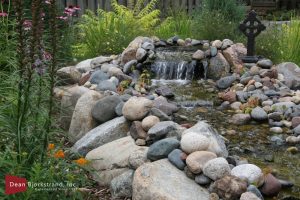As winter gives way to warmer temperatures, your yard and landscape may need some attention before spring arrives. Snow, ice, and cold temperatures can take a toll on your lawn, trees, shrubs, and garden beds. Proper preparation ensures your outdoor space thrives throughout the growing season. Whether you’re a homeowner or a property manager, assessing and restoring your landscape after the winter thaw can make a significant difference. Here’s a step-by-step guide to help you get your yard ready for spring.
-
Assess the Condition of Your Yard
Before starting yard work, take a walk around your property to evaluate any damage caused by winter weather. Look for broken branches, compacted soil, moldy patches of grass, and areas affected by ice or salt. Identifying these issues early helps you determine the necessary repairs and maintenance.
-
Clean Up Debris
Winter can leave behind fallen branches, dead leaves, and other debris. Removing these materials helps prevent disease, mold growth, and pests from settling in. Rake up any remaining leaves, clear away twigs, and dispose of plant material that didn’t survive the cold months.
-
Revitalize Your Lawn
Your lawn may look brown and patchy after the snow melts, but with the proper care, it will bounce back. Start by gently raking the grass to remove thatch buildup and allow new growth to emerge. If you notice compacted soil, consider aerating your lawn to improve water and nutrient absorption. Early spring is also a great time to oversee thin areas and apply a slow-release fertilizer to give your grass a healthy start.
-
Inspect and Prune Trees and Shrubs
Cold temperatures and heavy snow can stress and damage trees and shrubs. Inspect branches for signs of breakage or disease and prune any dead or damaged ones. Pruning promotes healthy growth and prevents weak branches from falling during spring storms. For larger trees, consider hiring a professional arborist to ensure proper care.
-
Refresh Your Garden Beds
Once the ground has thawed, turn your attention to your garden beds. Remove dead plants and weeds, and loosen the soil to improve aeration. Adding fresh mulch enhances the appearance of your landscape and helps retain moisture and suppress weeds. If you plan to plant flowers, vegetables, or shrubs, early spring is a good time to prepare the soil with compost or organic matter.
-
Check Your Irrigation System
If you use a sprinkler or irrigation system, inspect it for any leaks or damage caused by freezing temperatures. Test the system to ensure proper coverage and adjust settings for the spring growing season. Proper irrigation is essential for maintaining a lush, healthy landscape.
-
Plan Your Spring Landscaping Projects
Spring is the perfect time to think about new landscaping projects. Whether you’re considering adding flower beds, installing a new patio, or revamping your outdoor living space, planning early allows you to get a head start before peak gardening season. Consulting with a professional landscaper can help bring your vision to life and ensure long-term success.
-
Prepare for Pests and Weeds
With warmer temperatures come weeds and pests that can disrupt your landscape. Applying pre-emergent weed control early in the season can help prevent unwanted growth. Additionally, check for signs of pests such as burrowing animals or insect infestations. Natural solutions, such as introducing beneficial insects or using organic repellents, can help keep your yard healthy without harming the environment.
Get Your Yard Spring-Ready with Professional Help
Whether you need lawn restoration, tree trimming, or a complete landscape makeover, professional landscaping services can save you time and enhance the beauty of your outdoor space. By following these steps, your yard will be well-prepared for spring, setting the stage for a vibrant, healthy landscape all season long.
Whether you are experiencing a drought, or there is a municipal ordinance on water usage, chances are your lawn is in desperate need of water. A lush green lawn is a sight to behold, but for many Minnesotan residents, it is only but a dream. Maintaining your lawn requires a lot of water, however, many factors can prevent a homeowner from having a thriving lawn.
No matter where you live, conserving water is something we should all take part in, especially when it comes to our lawns. If you are concerned about your water usage and want your lawn to look as best as it can, follow these three steps on how you can conserve your water usage in the summer.
Give the Lawn Proper Nutrition
Your grass needs a constant supply of nutrients to balance its growth. A well-fed lawn will grow much deeper roots, which means it can absorb water and nutrients much more efficiently. In addition, with the proper nutrients, your grass will likely be more resistant to stress and diseases.
Cut Your Grass Correctly
Not many homeowners know that there is an art to mowing the lawn. Make sure to always change the direction of how you mow, as constant movements in the same directions can cause too much stress for the grass. If you can customize your lawnmower’s settings, aim for a 3-4 inch cut.
Watering Techniques
Mother nature can usually do the job of watering for you, but unfortunately, many times during the Summer we are ravaged by weeks of droughts. If you plan on watering your lawn, make sure to install smart watering devices. These can use plant, soil, and weather data to accurately water your lawn the most efficiently. This can cut down on overwatering, which will conserve water.
Water features can be a great addition to any landscape design. Whether you’re looking for a peaceful pond or a lively fountain, they can help bring life to your yard. There is quite a large variety of water features, each with differing prices and levels of upkeep, so here are some overviews of popular water features to help you choose the one that is perfect for your yard. (more…)

